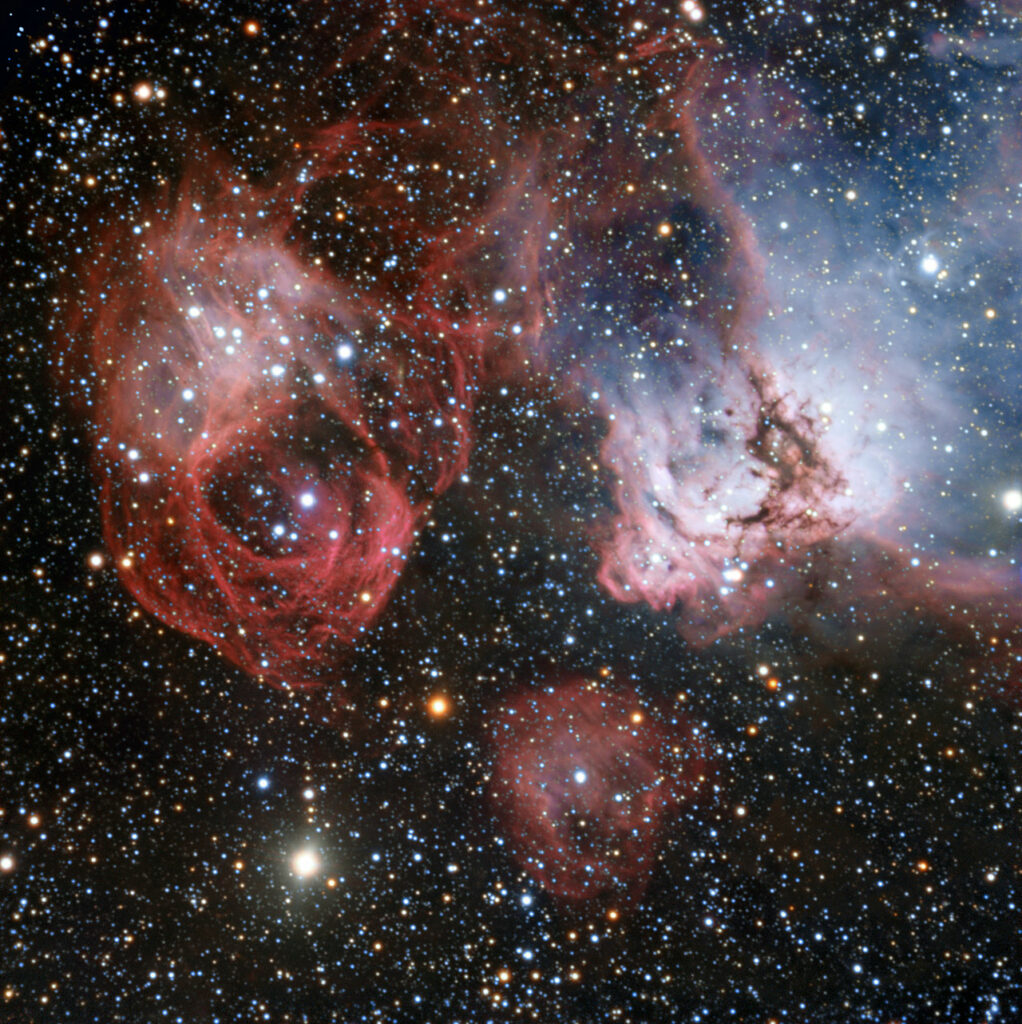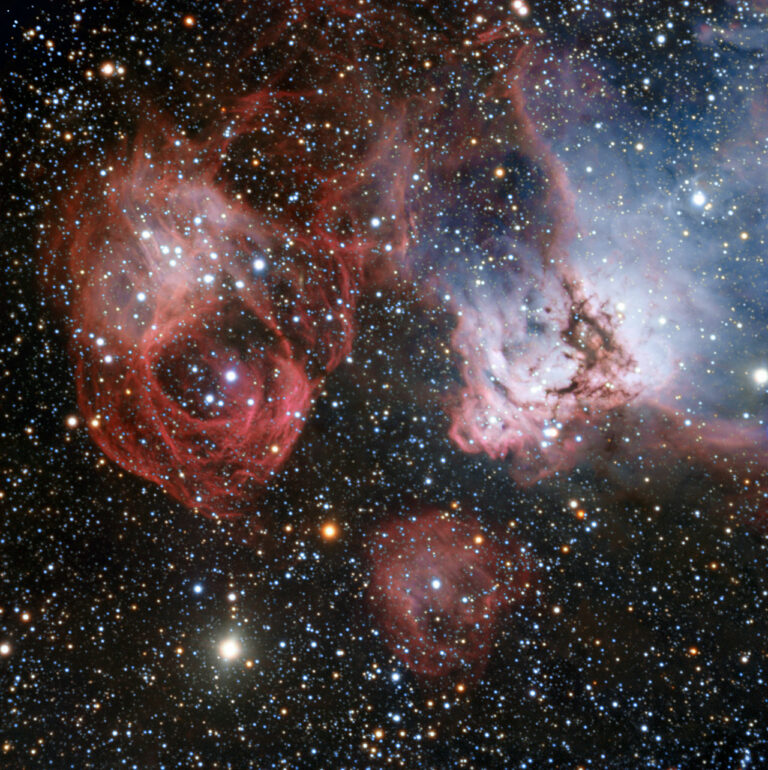A Dramatic Tale of Stellar Birth and Demise
The Large Magellanic Cloud, situated in the constellation of Dorado, is one of the closest galaxies to our own. Recently, astronomers have utilized the capabilities of ESO’s Very Large Telescope to investigate a lesser-known area within this galaxy. The resulting image showcases the presence of gas and dust clouds where new stars are being born, shaping their surroundings into peculiar forms. However, the image also reveals the aftermath of stellar death, with filaments formed by a supernova explosion.
Located approximately 160,000 light-years away from us, the Large Magellanic Cloud is considered one of our neighboring galaxies. It actively generates new stars in regions that emit such intense brightness that some can even be observed from Earth without the aid of telescopes, like the Tarantula Nebula. This particular image, captured by ESO’s Very Large Telescope at the Paranal Observatory in Chile, focuses on an area known as NGC 2035, which is sometimes referred to as the Dragon’s Head Nebula.

NGC 2035 is categorized as an HII region, or emission nebula, consisting of gas clouds that emit light due to the energetic radiation emitted by young stars. This radiation causes electrons within the gas to separate from atoms, eventually recombining with other atoms and releasing light. Intermingled with the gas are dark clusters of dust that absorb light instead of emitting it, resulting in intricate patterns and dark formations across the nebula.
Contrary to the starbirth processes, the filamentary shapes observed on the left side of the image are a consequence of stellar death. These shapes were formed by one of the most violent events that can occur in the Universe—a supernova explosion. These explosions are incredibly luminous, often surpassing the brightness of their entire host galaxy for a brief period before gradually fading away over several weeks or months.
Upon observing this image, it may be challenging to comprehend the immense size of these clouds, as they span several hundred light-years. Furthermore, it is important to note that these clouds are not within our own galaxy but exist far beyond it. Although the Large Magellanic Cloud is vast, it pales in comparison to the size of our own galaxy, spanning a mere 14,000 light-years—approximately one-tenth the size of the Milky Way.
This article is republished from PhysORG under a Creative Commons license. Read the original article.
Do not forget to share your opinion with us to provide you with the best posts !





0 Comments